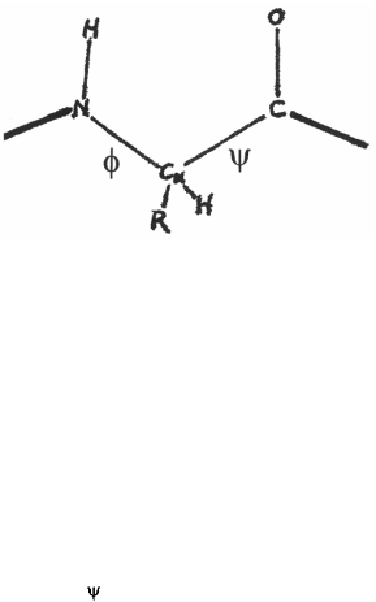Biology Reference
In-Depth Information
118
For each amino acid residue, it is bracketed by two peptide bonds, one on
the N-side and the other on the C-side. Since there is no rotational degree of
freedom for peptide bonds, the protein backbone contains two single bonds
for each residue, free to rotate. They are the and the bonds (Fig.
5-2). These rotations are designated as and respectively. They will be
defined precisely.
Figure 5-2
. Two single bonds free to rotate in an amino acid residue.
THE AND ANGLES
The best method of displaying the and angles in three dimension is to
make use of the paper model illustrated in Fig. 5-3, as originally used by
Pauling to discover the -helix. Fig. 5-2 is duplicated, and the and
the bonds are extended beyond the -atom. Cut along the heavy
lines drawn on the page. This includes the triangle outlined by the above
extensions. Fold along the
bond, as well as the
bond. These
folds represent the
and
angles respectively. The
angle is the angle
between the plane defined by
and the plane defined by





































